July Foraging
With July in full swing, nature is at its most generous. The British countryside is alive with thick greenery and bursting with wild foods ready to be gathered. While June dazzled us with flowers and fresh shoots, July shifts the spotlight onto early fruits, seeds, and the deep, rich flavours of summer in full bloom.
This month, you’ll find a fascinating mix of late-season blossoms and the first taste of summer’s harvest. Whether you’re meandering through woodlands, wandering down rural paths, or checking out local parks, July’s wild pantry is packed with vibrant, tasty treats — from fragrant herbs to the earliest signs of elderberries starting to ripen.
Here’s a guide to what’s ripe for the picking…
1. Chickweed (Stellaria media)
Where to Find ItChickweed grows low to the ground and loves damp, shady spaces — gardens, verges, and waste ground.
What to Pick
The crisp, tender leaves and tiny white flowers. Best harvested young before flowering in hot weather.
How to Use It
- Eat raw in salads or pesto
- Use as a spinach substitute in stir-fries and soups
- Make a cooling chickweed salve for irritated skin
Nutrient-rich and high in vitamin C. Anti-inflammatory and soothing both internally and externally.
Storage
Use fresh or keep in the fridge for 2–3 days. Not suitable for drying.
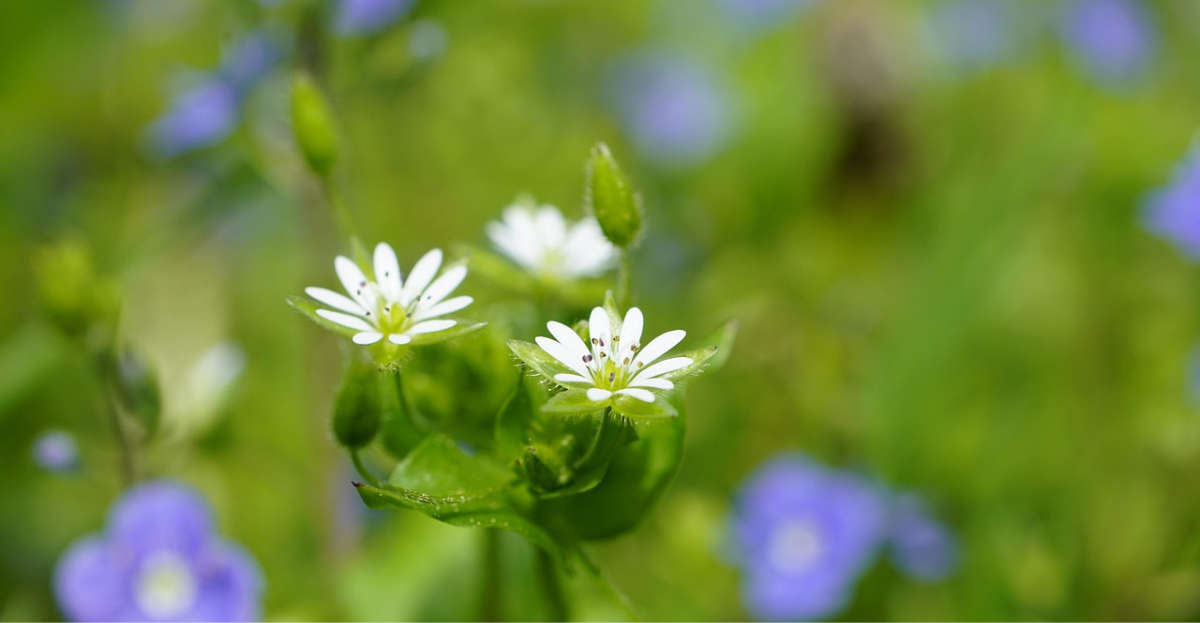
Chickweed & Nettle Spanakopita
A wild twist on a Greek classic, using fresh July greens.
Ingredients:
- 1 large bunch of chickweed
- 1 large bunch of young nettles
- 1 small onion, finely chopped
- 1 garlic clove, minced
- 200g feta cheese (or similar crumbly cheese)
- 1 egg
- Olive oil
- Filo pastry
Method:
Blanch nettles, then chop both greens finely.
Sauté the onion and garlic until soft, then add the greens and cook briefly.Let cool, then mix with crumbled feta and beaten egg.
Layer filo in an oiled baking tray, brushing each sheet with olive oil.
Spread filling, fold or roll, and bake at 180°C for 30–40 minutes.
2. Wood Sorrel (Oxalis acetosella)
Where to Find ItFound in shady woodland, especially beneath beech or oak. Look for its distinctive heart-shaped leaves and white-pink veined flowers.
What to Pick
Leaves and flowers — but use sparingly.
How to Use It
- Garnish salads and fish dishes
- Add to wild sorbet for a citrus zing
- Use in small amounts to add acidity to sauces
Refreshing, high in vitamin C, but contains oxalic acid — so best in moderation, especially for those with kidney concerns.
Storage
Use immediately; do not store or dry well.
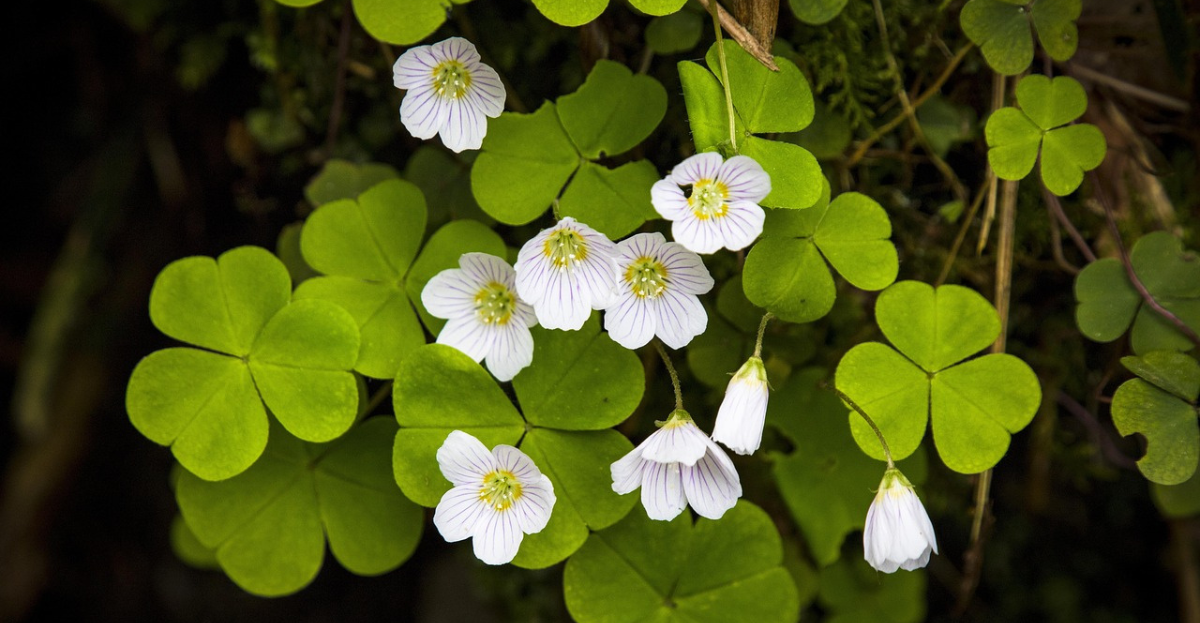
3. Meadowsweet (Filipendula ulmaria)
Where to Find It
Loves damp places — riverbanks, ditches, wet meadows. Tall with creamy, frothy flowers and a sweet almond scent.
What to Pick
The flowers — harvest before they begin to brown.
How to Use It
- Infuse in syrup or vinegar
- Flavour mead, custard, or panna cotta
- Use in herbal tea blends
A natural source of salicylates (aspirin-like compounds), used traditionally to soothe headaches and inflammation.
Storage
Dry flowers on racks and store them in airtight jars.
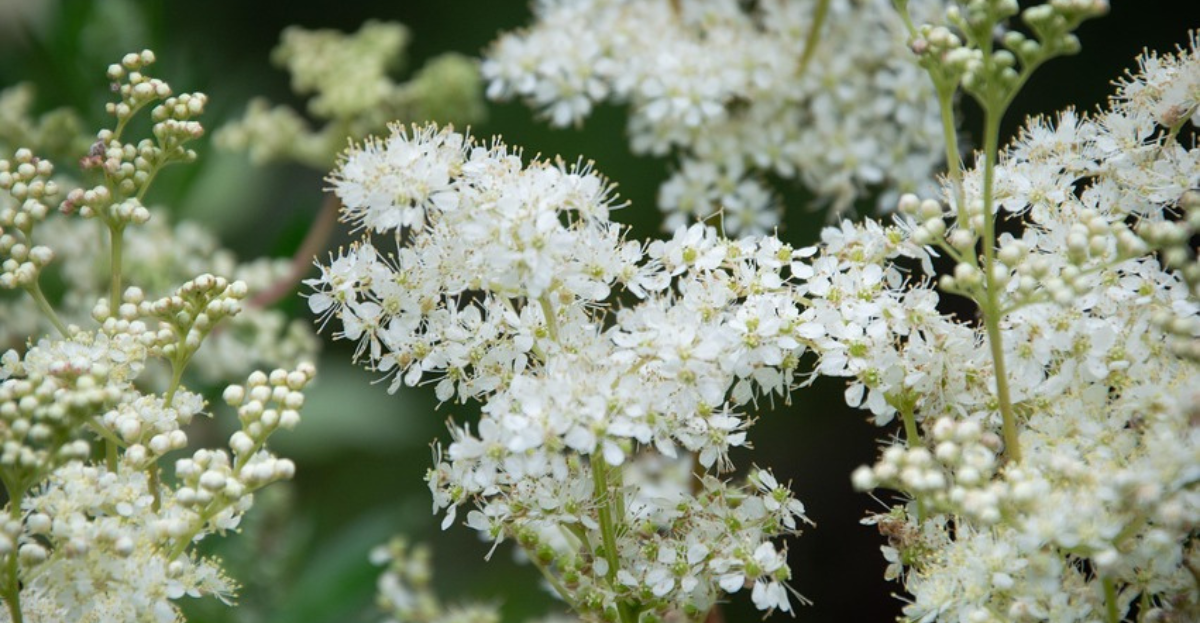
4. Yarrow (Achillea millefolium)
Where to Find It
Grassy meadows, verges, and dry, open land. Recognisable by its feathery leaves and flat-topped white or pink flower clusters.
Leaves and flowers — ideally in bloom but not browned.
How to Use It
- Soft herb for sauces, purées, or sautéed into dishes
- Use leaves for tea or infused oil
- Excellent dried for winter use
Used traditionally to stop bleeding and reduce inflammation. Also good for digestion.
Storage
Dry both leaves and flowers for tea or tincture use.
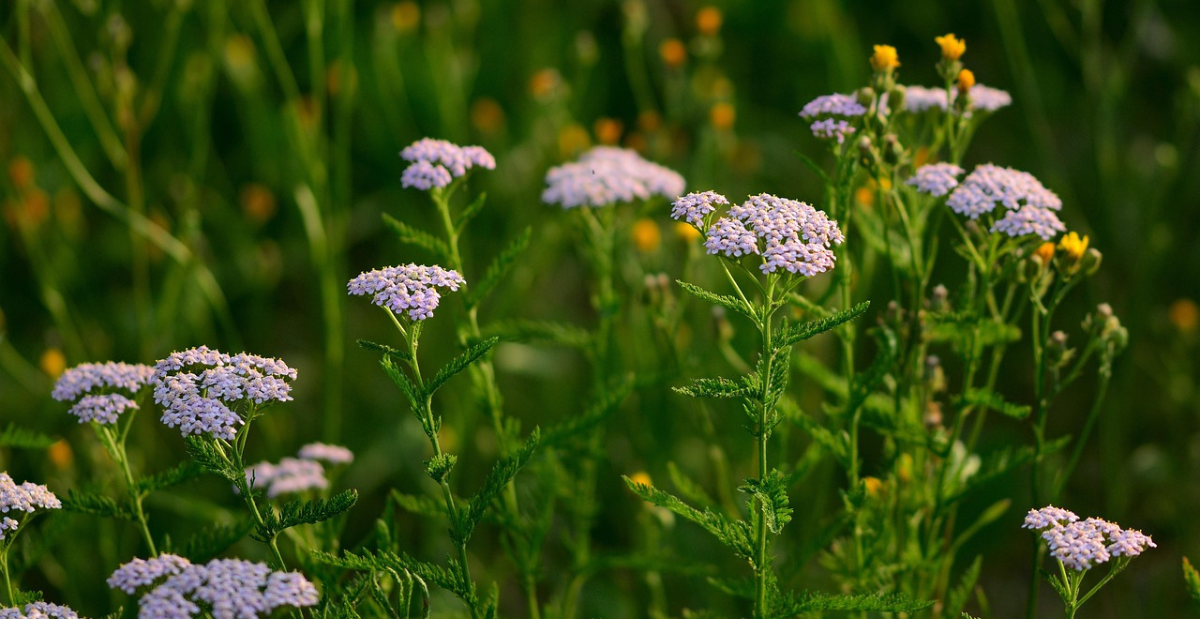
5. Wild Strawberries (Fragaria vesca)
Where to Find It
Edges of woodland paths, grasslands, and hedgerows. Look low to the ground for trailing plants with small trifoliate leaves and tiny red berries.
What to Pick
The tiny, fragrant berries — fully red and ripe.
How to Use It
- Eat fresh as they are — full of flavour
- Use in desserts, jams, or wild strawberry & thyme ice cream
- Add to salads for a sweet-tart hit
Rich in vitamin C and antioxidants. A natural summer treat.
Storage
Very perishable — eat or preserve quickly.
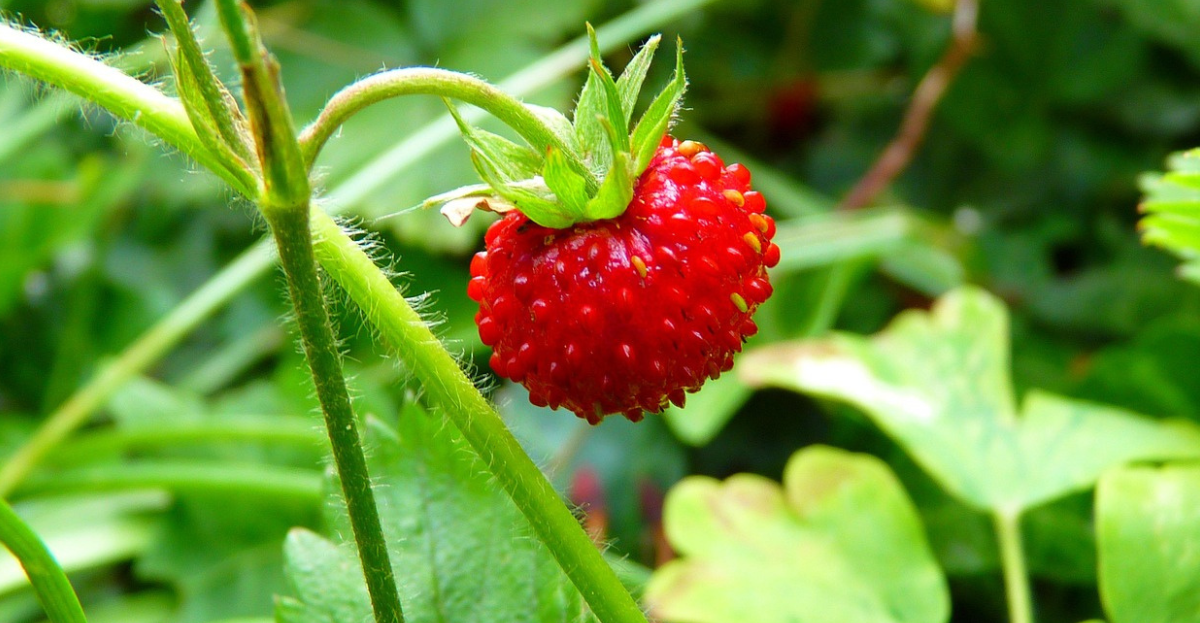
Wild Strawberry & Yarrow Ice Cream
Delicately herbal and fruity — a celebration of July hedgerows.
Ingredients:
- 200g wild strawberries (or regular ones if blending)
- 250ml double cream
- 250ml whole milk
- 100g sugar
- 1 tbsp chopped fresh yarrow leaves
- 3 egg yolks
Method:
Heat the milk with yarrow leaves gently — do not boil — then let steep 10 minutes.
Strain and return to heat with sugar, cream, and beaten yolks.
Stir constantly until it thickens slightly.
Cool, then blend in the strawberries and chill.
Churn in an ice cream maker or freeze in a container, stirring every hour.
6. Gorse Flowers (Ulex europaeus)
Where to Find ItHeathlands, moorlands, and sandy soils — gorse is tough, spiny, and abundant.
What to Pick
Only the bright yellow flowers — beware the sharp spines.
How to Use It
- Infuse in syrup or wine
- Add to spirits or lemonade for a coconut twist
- Make gorse flower cordial or mead
Lightly fragrant and soothing. Traditionally used for uplifting mood.
Storage
Best used fresh, but can be dried gently.
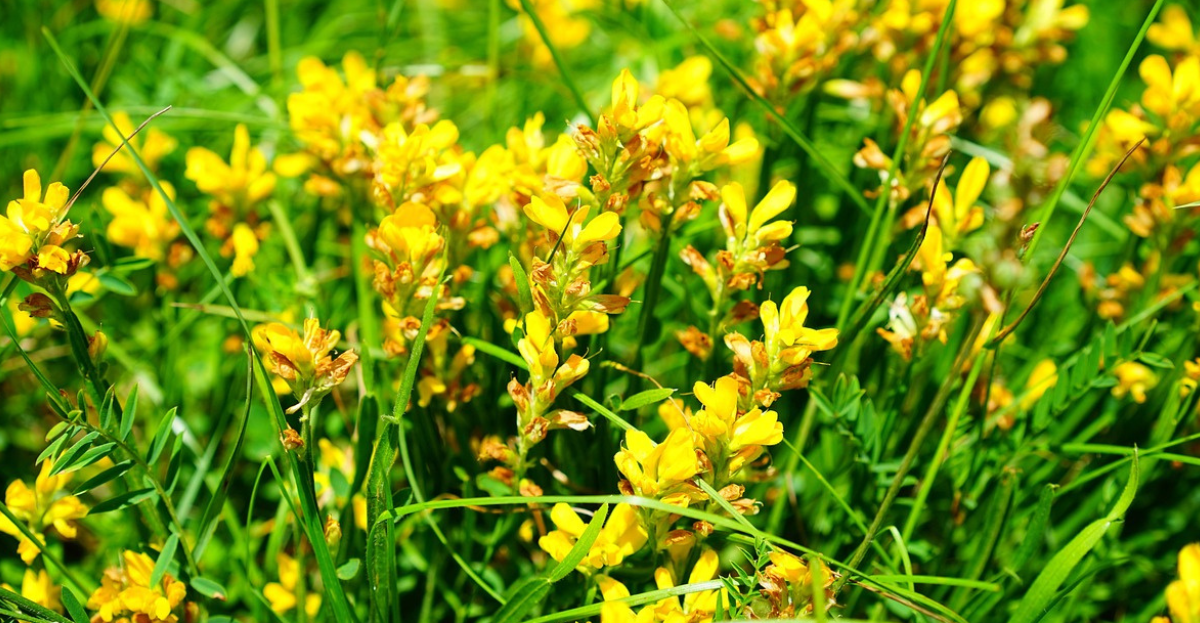
7. Nettles (Urtica dioica)
Where to Find ItAlmost anywhere! Fields, gardens, hedgerows. Look for fresh growth in partially shaded areas.
What to Pick
Young top leaves — preferably from plants less than knee height.
How to Use It
- Soups, pestos, or spanakopita-style pies
- Brew into tea or nettle beer
- Use in place of spinach or kale
Rich in iron, calcium, and vitamin C. Detoxifying and supportive for skin and joints.
Storage
Blanch and freeze or dry for tea
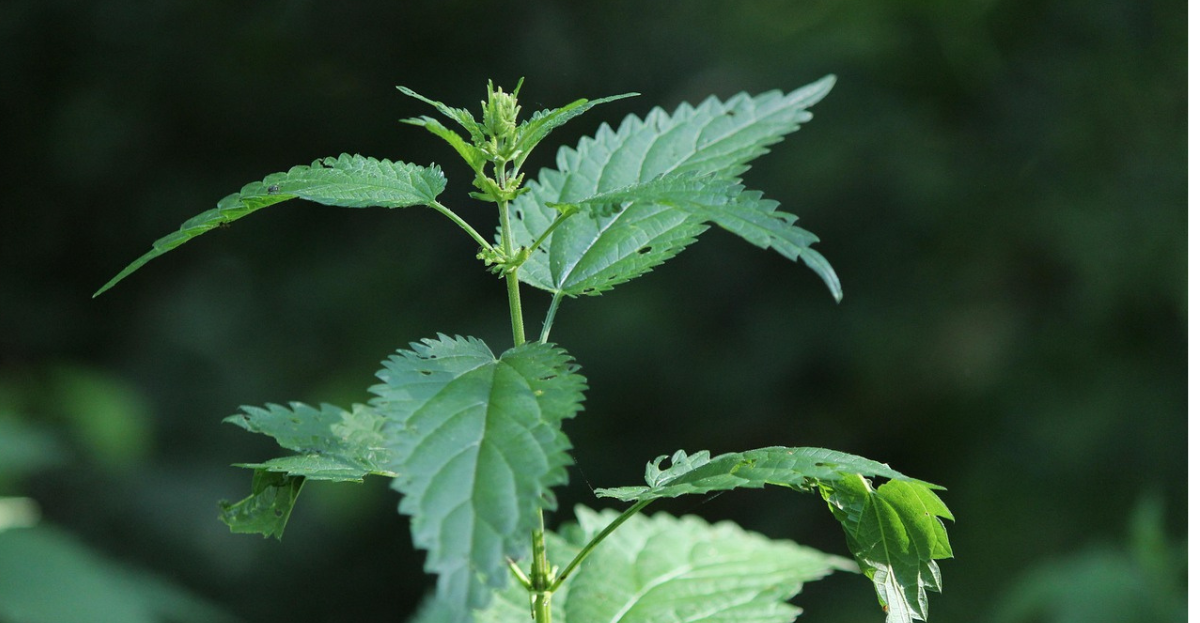
8. Dandelions (Taraxacum officinale)
Where to Find ItGrassy lawns, verges, field edges — one of the UK’s most recognisable plants.
What to Pick
Leaves (young and tender), yellow petals, and roots (for roasting).
How to Use It
- Petals for syrup, jelly, or wine
- Leaves in salads or sautéed
- Roots dried and roasted for coffee substitute
Diuretic, detoxifying, and supportive for liver and digestion.
Storage
Leaves perish quickly; roots and petals can be dried or frozen.
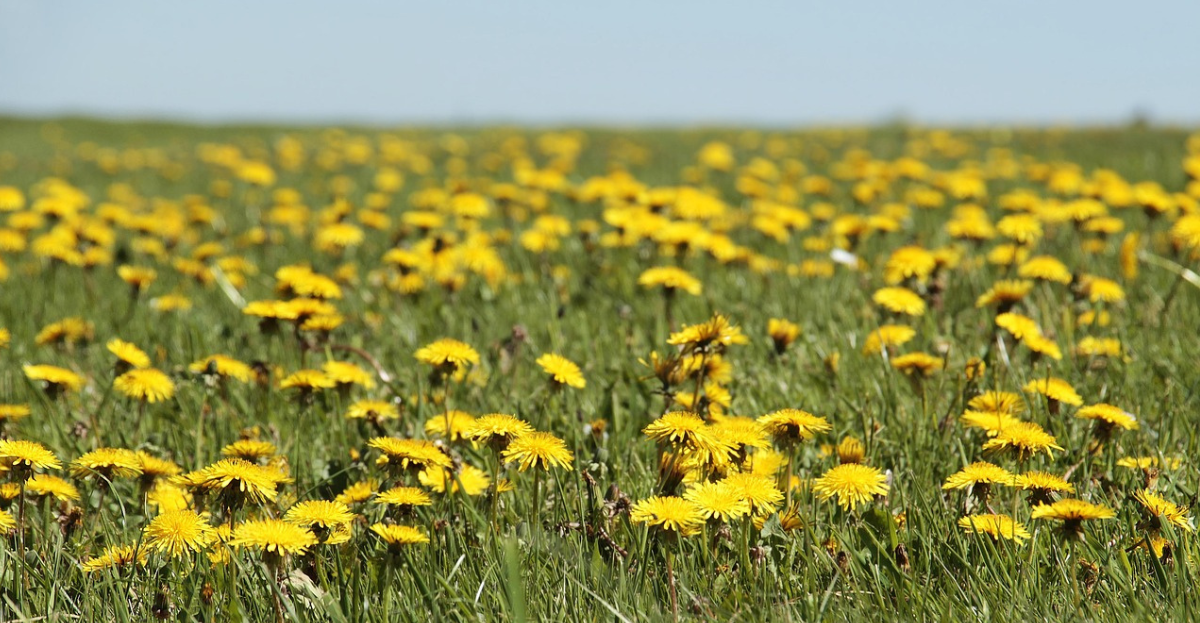
9. Elderberries & Elderflowers (Sambucus nigra)
Where to Find ItCommon along hedgerows, woodlands, and park edges. Look for trees with compound leaves and large flat-topped clusters.
What to Pick
In July, you may still find elderflowers in cooler areas, or the first elderberries ripening
in the south.
How to Use It
- Flowers for cordials, pannacotta, or wine
- Berries (cooked only!) for jams, chutneys, and elderberry wine
- Both make excellent herbal remedies
Both flowers and berries are immune-boosting, anti-inflammatory, and rich in antioxidants. Elder played a key role in the development of aspirin due to its salicylic acid content.
Storage
Dry elderflowers; freeze or cook berries immediately after picking.
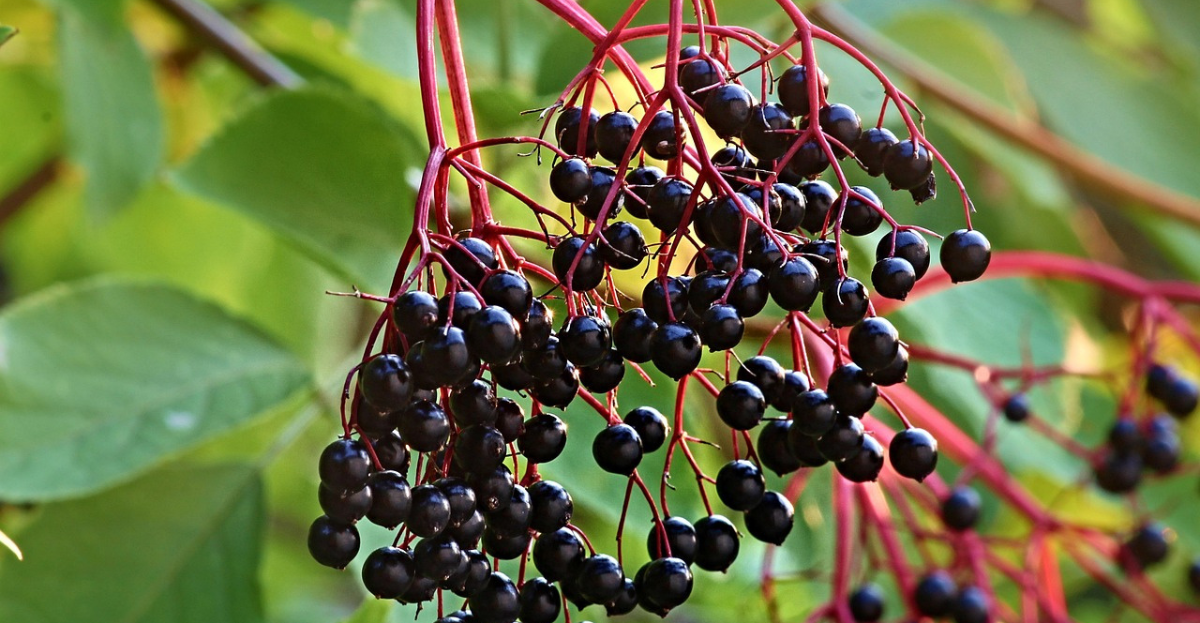
10. Wild Plums / Cherry Plums (Prunus spp.)
Where to Find ItHedgerows, old orchards, or scrubby woodland. Look for small trees with round red or yellow fruits around 2–3 cm wide.
What to Pick
Ripe fruits that come away easily and are richly coloured.
How to Use It
- Eat fresh
- Use in jams, chutneys, or baked desserts
- Make wild plum gin or wine
Great source of vitamin A, potassium, and beta carotene. Gently laxative if eaten in quantity.
Storage
Refrigerate or freeze after pitting. Or preserve in syrup or jam
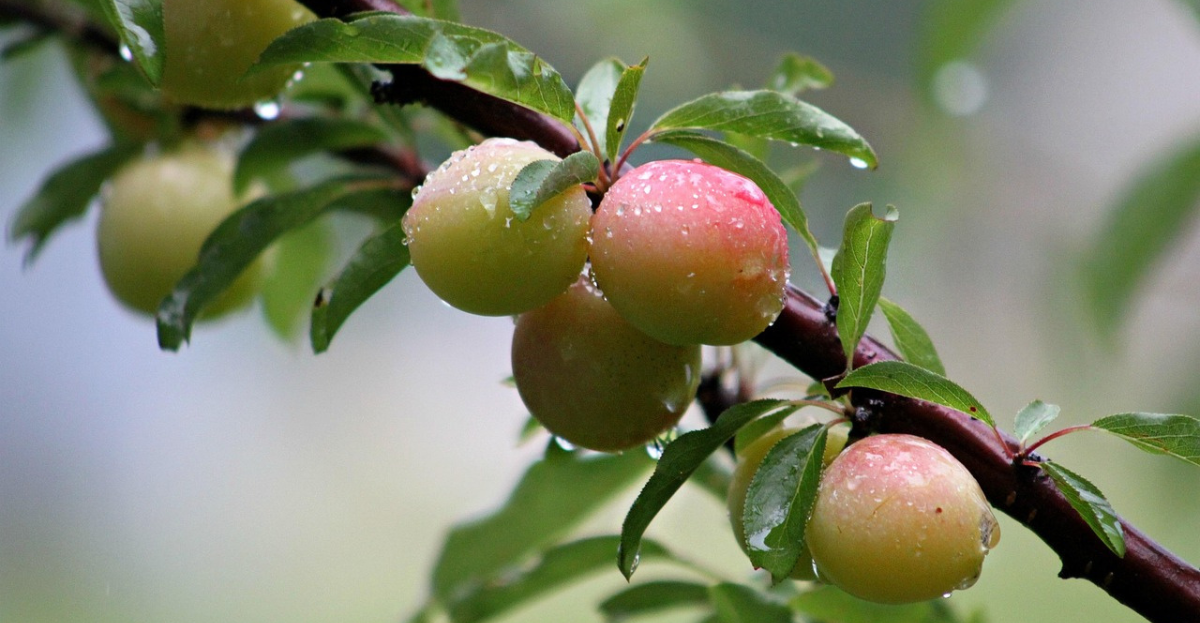
Wild Plum & Elderberry Wine (for the patient!)
This recipe needs time but rewards your patience with deep, fruity richness.
Ingredients:
- 1.5kg wild plums
- 500g elderberries
- 1.5kg sugar
- 1 sachet of wine yeast
- 1 Campden tablet (optional)
- Water to 4.5 litres (1 gallon)
Method (simplified):
Crush the fruit, pour over boiling water, and stir in half the sugar.
Add Campden tablet and leave for 24 hours.Add yeast and ferment in a covered bucket for 5–7 days.
Strain into a demijohn, add remaining sugar, and fit an airlock
Leave to ferment 4–6 weeks until bubbling stops.
Rack off the sediment, bottle, and age at least 6 months.
July is a turning point in the foraging calendar — the blooms of early summer start to give way to the first flush of fruits and seeds. It’s a time of richness, and a chance to taste what the season has ripened with care.
As always, forage mindfully: take only what you need, leave plenty for wildlife, and be sure of your plant ID before consuming anything. With a basket in one hand and time to wander, July offers a little magic in every hedgerow.
Happy foraging!
